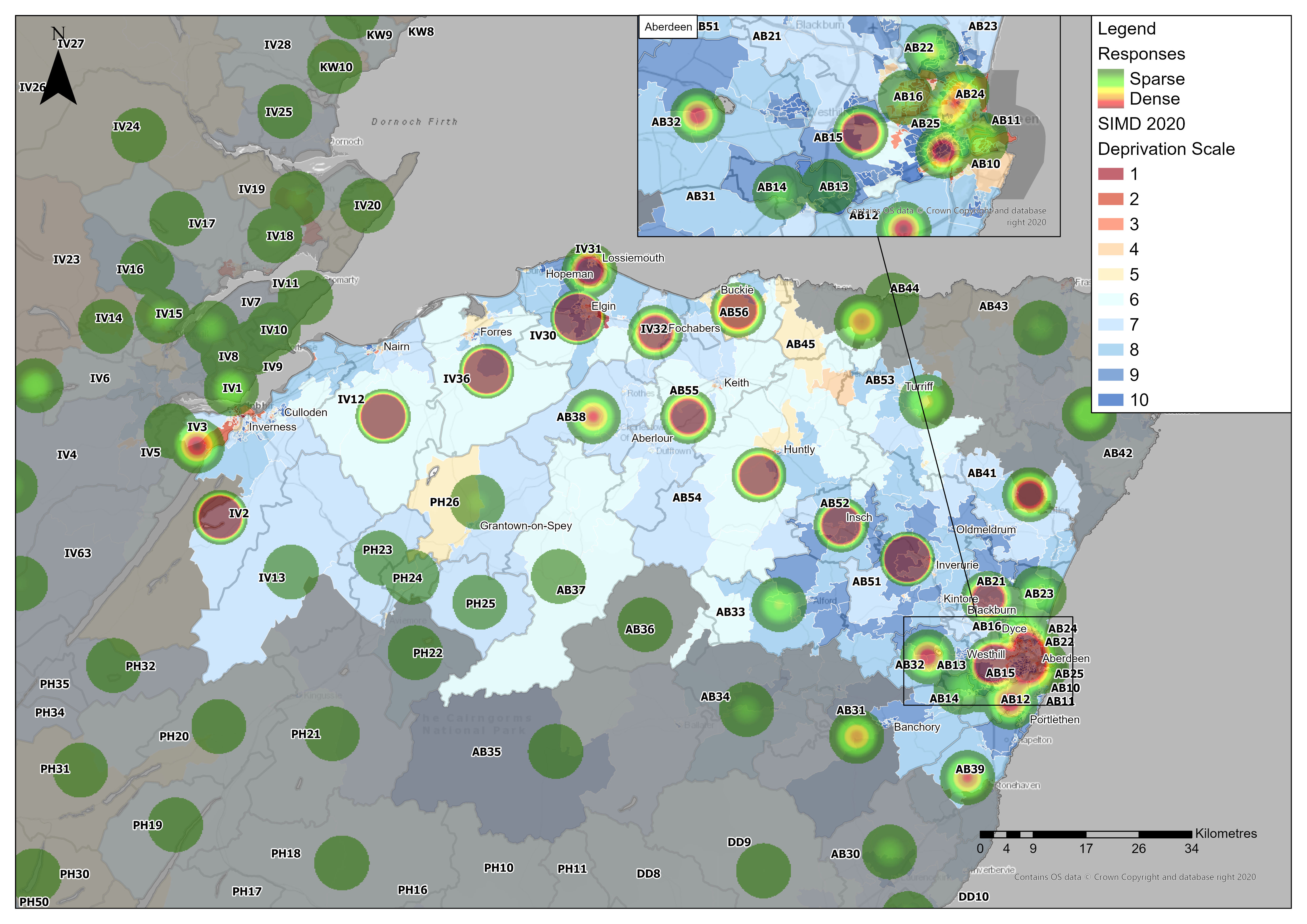Stakeholder Engagement
Overview
The STAG process is firmly founded on participation and consultation. Accordingly, public engagement has been pivotal to inform the A96 Corridor Review at all key stages. A comprehensive stakeholder engagement plan was developed at an early stage in the review process and has been carefully devised to ensure general inclusivity and representation of key equality groups.
Although there are no legal consultation requirements for FSDA, there has been engagement with the public throughout the Corridor Review in order to provide early opportunities within appropriate timeframes for opinions to be expressed on the transport intervention options for the A96 corridor as they have developed.
Public Consultation Activities
During the course of the A96 Corridor Review, there has been extensive public engagement. An initial four-week public consultation was held from 12 May 2022 to 10 June 2022. During this period, the public and stakeholders were invited to share insights into travel habits, general thoughts on travel and transport along the corridor and identify problems and potential opportunities along the route. In total, 4,687 responses were received via the online consultation survey and email responses. Figure 4-1 shows the level of responses according to their SIMD ranking.
Detailed overview of the findings are available in the A96 Corridor Review Stakeholder and Public Engagement Consultation Report ( Transport Scotland (2022) A96 Corridor Review: Stakeholder & Public Engagement Consultation Report ) . A summary of the main findings are as follows:
- 96% of respondents stated that car is their primary mode of travel on the A96 corridor.
- Public transport is a less prevalent mode of transport with 46% of respondents indicating they do not use public transport along the route.
- 88% of respondents were very dissatisfied or dissatisfied with the availability of safe overtaking opportunities, 79% were very dissatisfied or dissatisfied with levels of traffic congestion and 76% were very dissatisfied or dissatisfied with the length of journey times.
- 37% were very dissatisfied or dissatisfied with the frequency of bus services, 43% were very dissatisfied or dissatisfied with the availability of safe walking infrastructure, 63% were very dissatisfied or dissatisfied with the cost of rail travel and 58% of respondents felt very unsafe or somewhat unsafe when using the road network.

The most frequently raised priority for the A96 Corridor Review, by 55% of respondents, was dualling the route, while only 12% of respondents opposed full or partial dualling. Similarly, improving road safety was raised by 50% of respondents, which included general safety concerns as well as safety of driving, cycling and walking.
The need to improve rail services, including train connections, cost, and comfort of travel, was raised by 30% of respondents, and another 30% of respondents raised bypassing town centres. Other priorities listed by respondents include improvements to bus services (raised by 24% of respondents), general public transport improvements including public transport connectivity and integration (24% of respondents), and better road maintenance including infrastructure, surface, signage etc. (22% of respondents).
Stakeholder Engagement Activities
As part of the ongoing engagement with stakeholders, a series of stakeholder engagement sessions were held via an online collaboration platform to understand the views of different stakeholder groupings throughout the corridor. All sessions were attended by Jacobs AECOM representatives and split by the below stakeholder groupings:
- representatives from the four local authorities and Highlands and Islands Transport Partnership (HITRANS)
- environmental stakeholders, including local authority Environmental Planners
- North East Scotland Transport Partnership (Nestrans) and Aberdeenshire Council
- representatives from statutory environmental groups
- representatives from active travel and accessibility stakeholders
- representatives from business and business organisation stakeholders
- representatives from Stagecoach
- representatives from Police Scotland.
Across these sessions, consistent problems, opportunities and suggestions were provided on the topics outlined in Table 4-1 :
| Topic | Problems | Opportunities | Suggestions/ interventions |
|---|---|---|---|
|
Active travel |
Lack of appropriate active travel infrastructure, especially concerning safety while cycling and walking |
Inclusivity and connectivity of active travel throughout the A96 corridor |
Sustainable and safe active travel provision |
|
Public transport |
Low public transport uptake due to slow journey times, high travel costs and frequency of services |
Reliable and sustainable public transport infrastructure improvements, including Demand Responsive Transport (DRT) and Community Transport (CT) links |
Improvement to public transport services, including Park and Ride facilities, multi-modal transport hubs and interchanges between active travel and public transport |
|
Road network |
Lack of road safety and slow journey times |
Sustainable travel and green infrastructure improvements to enhance connectivity |
Sustainable road safety travel improvements with connectivity to public transport |
|
Environment |
Lack of green infrastructure and traffic emissions within towns along the route |
Decarbonisation strategies, including electric vehicle charging infrastructure and sustainable travel infrastructure |
Increase in green infrastructure |
SEqIA Stakeholder Workshop
An online consultation workshop was held to present the SEqIA Scoping Report on 14 March 2023. Prior to this, the SEqIA Scoping Report was issued to 31 organisations (see Appendix B) representing equalities groups, socio-economically disadvantaged groups and islands communities, along with an invitation to attend the workshop.
Representatives from Jacobs AECOM were present and provided stakeholders with a comprehensive overview of the A96 Corridor Review process to date and the initial requirements of Transport Scotland in its duties to prepare an EqIA, CRWIA and FSDA. The key feedback from these sessions included:
- the need to consider the significant overlaps across the various social and equality impact topic areas and to consider intersectionality as part of the assessment
- that where possible, the assessments should refer to evidence provided by those with lived experience
- the need to incorporate impacts on health into the assessments.
In addition, all attendees agreed they were content with scoping-out an Islands and Communities Impact Assessment for the review.